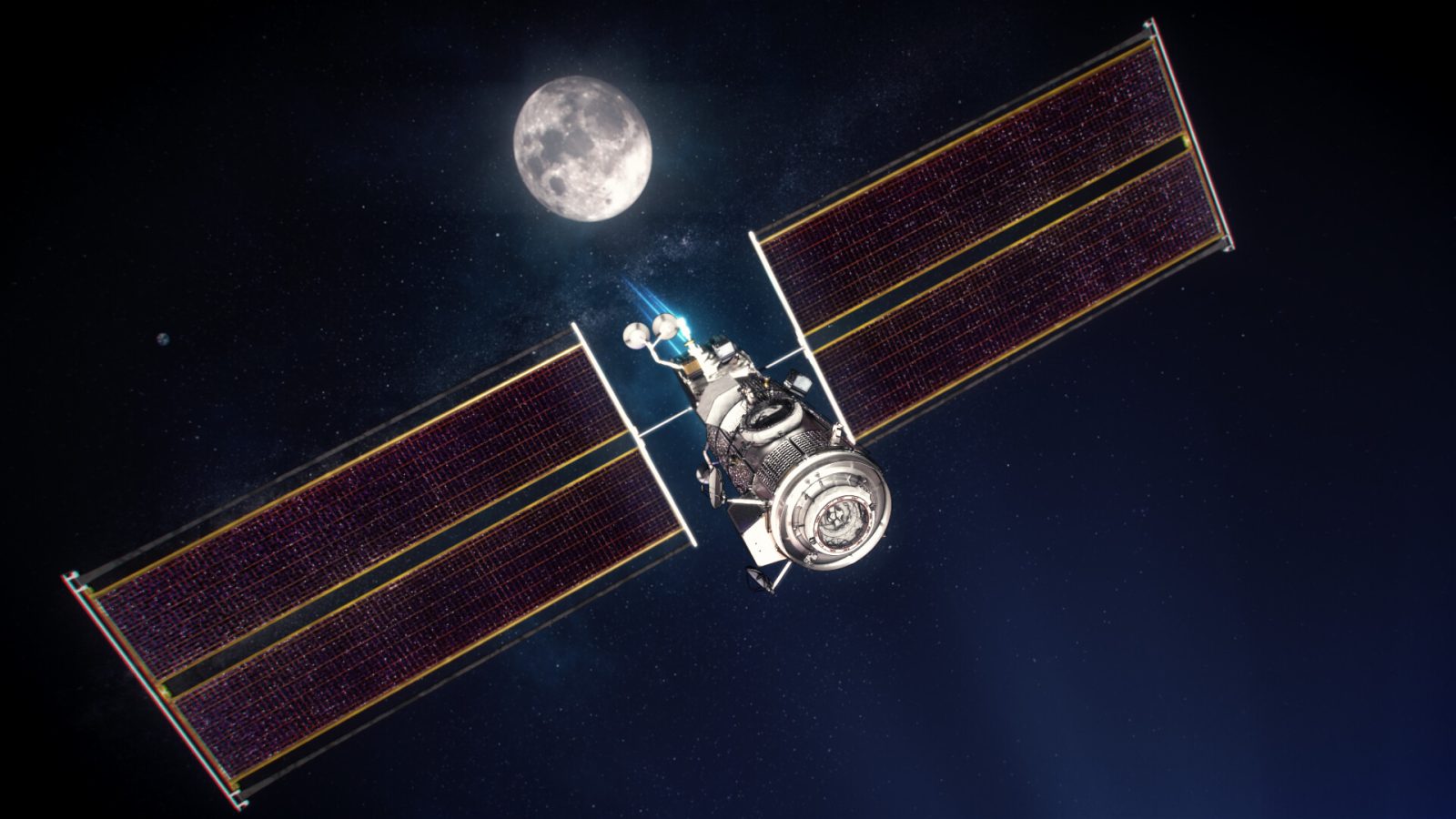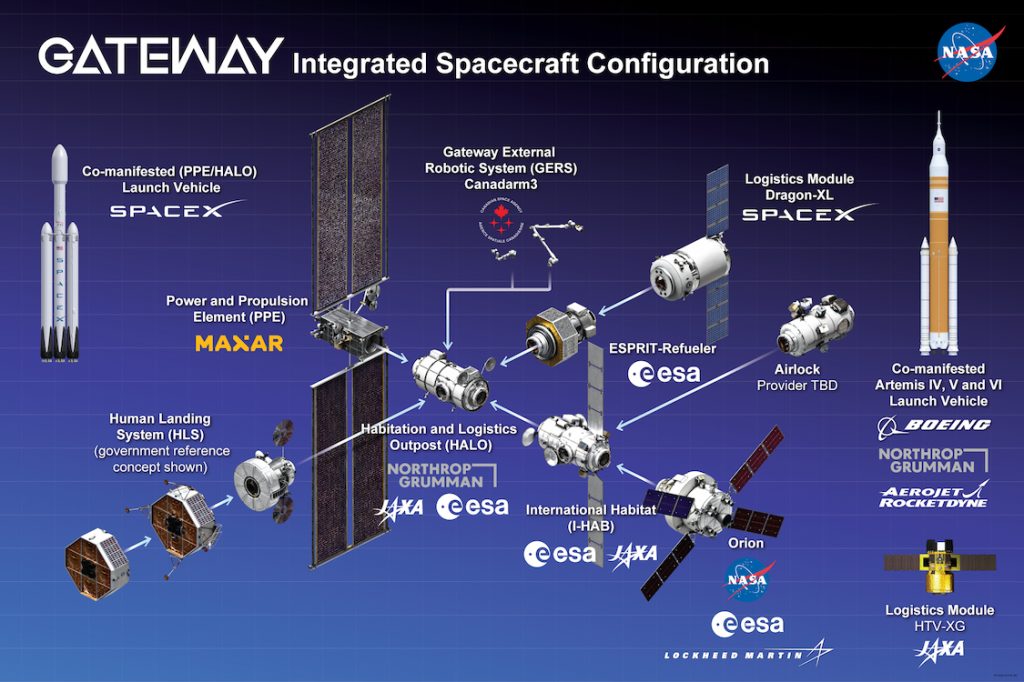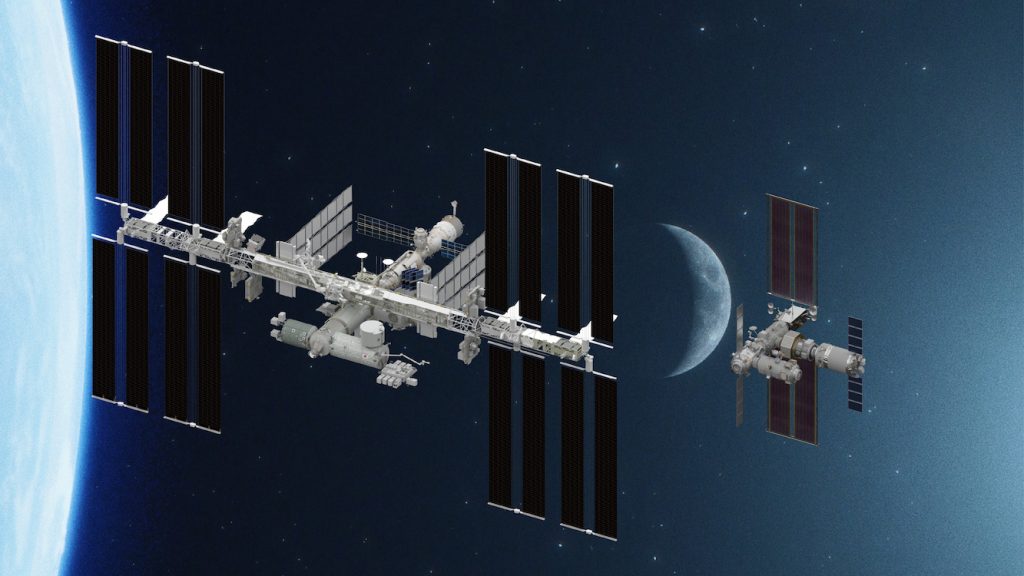
In its latest earnings report, Northrop Grumman disclosed an “unfavorable estimate-at-completion adjustment” for the Habitation and Logistics Outpost module for NASA’s Lunar Gateway.
According to Northrop Grumman’s second quarter financial results, released July 27, the company is expected to take a charge of about $36 million on its contract to build the HALO module, which is a key component of NASA’s Artemis program and its lunar exploration ambitions.
NASA awarded Northrop Grumman a $935 million fixed-price contract in July 2021 to build HALO, which is a scaled-down habitation module based on the company’s Cygnus spacecraft that is currently resupplying the International Space Station in low Earth orbit. It will provide essential living accommodations for astronauts while circling the Moon.
Additionally, HALO is designed with multiple docking ports to facilitate visiting Orion spacecraft, lunar landers, and other modules contributed by international partners.

According to the company, the $36 million charge stems from dynamic factors, such as changing mission requirements and broader economic challenges.
During an earnings call, Kathy Warden, the CEO of Northrop Grumman, acknowledged that earlier stages of HALO’s development had been executed under cost-plus contracts. However, two years ago the project transitioned to a fixed-price contract to produce the module.
While fixed-price contracts are ideally suited for stable requirements and mature designs, the Lunar Gateway program encountered evolving demands that necessitated adaptive change management, according to those close to the project.
The specifics of the changing requirements were not elaborated upon by Warden or the company. Nevertheless, the Lunar Gateway program has witnessed substantial evolution in recent years.
Join our Discord Server: Join the community with forums and chatrooms about space! Also, directly support us via a Server Subscription!
Notably, in 2020 NASA made a pivotal decision to jointly launch HALO with the Power and Propulsion Element, also called the PPE, which is being developed by Maxar Technologies.
This alternative approach was touted to reduce risks, as the modules could be mated on the ground before launch. However, the decision to fly both modules together on a single Falcon Heavy rocket introduced mass-related challenges. Additionally, an extended payload fairing will be required to accommodate the length of the combined components during liftoff.
Teams at Northrop Grumman and Maxar Technologies have been diligently addressing these technical obstacles to ensure a successful joint launch, which is currently expected as soon as late 2024 or early 2025

Rick Mastracchio, the director of business development at Northrop Grumman Space Systems, lauded the decision to launch PPE and HALO together, emphasizing the reduction in risk. He also highlighted the team’s efforts to overcome challenges associated with the combined launch, particularly regarding mass distribution.
Chris Coker, Maxar’s vice president for the PPE program, commended NASA for fostering a collaborative environment that encouraged the two companies to work together as true partners in seamlessly integrating their respective modules.
Engineers agree one of the primary hurdles facing HALO’s construction is the lack of experience operating in cislunar space. Assembling the Gateway in this region poses considerable difficulties, demanding further insights into the intricacies of operating and designing for cislunar space and the lunar surface.
FTC: We use income earning auto affiliate links. More.


Comments